| Listing 1 - 9 of 9 |
Sort by
|
Book
ISBN: 0817632926 Year: 1985 Volume: 3, 4 Publisher: Boston : Birkhäuser,
Abstract | Keywords | Export | Availability | Bookmark
 Loading...
Loading...Choose an application
- Reference Manager
- EndNote
- RefWorks (Direct export to RefWorks)
Book
Year: 1985 Publisher: Washington, D.C. : National Aeronautics and Space Administration, Scientific and Technical Information Branch,
Abstract | Keywords | Export | Availability | Bookmark
 Loading...
Loading...Choose an application
- Reference Manager
- EndNote
- RefWorks (Direct export to RefWorks)
Linear systems --- Airplanes --- Flutter (Aerodynamics) --- Stability of airplanes, Lateral --- Eigenvalues. --- Control theory. --- Mathematical optimization. --- Computer simulation. --- Control systems --- Automatic control
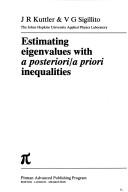
ISBN: 0273086995 9780273086994 Year: 1985 Publisher: Boston (Mass.) : Pitman advanced publishing program,
Abstract | Keywords | Export | Availability | Bookmark
 Loading...
Loading...Choose an application
- Reference Manager
- EndNote
- RefWorks (Direct export to RefWorks)
Operator theory --- Numerical solutions of differential equations --- Eigenvalues. --- Inequalities (Mathematics) --- Operator equations --- Numerical solutions. --- Inequalities (Mathematics). --- Differential equations, Partial --- Équations aux dérivées partielles --- Eigenvalues --- Problèmes aux valeurs propres --- Équations aux dérivées partielles. --- Problèmes aux valeurs propres. --- Analyse numérique. --- Numerical analysis --- Équations aux dérivées partielles. --- Problèmes aux valeurs propres. --- Analyse numérique
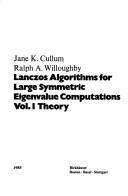
ISBN: 0817632948 0817630589 1468491806 1468491784 9780817630584 9780817632946 Year: 1985 Volume: 3-4 Publisher: Boston : Birkhäuser,
Abstract | Keywords | Export | Availability | Bookmark
 Loading...
Loading...Choose an application
- Reference Manager
- EndNote
- RefWorks (Direct export to RefWorks)
Symmetric matrices --- Data processing --- #TELE:SISTA --- 519.6 --- 681.3*G13 --- 681.3*G4 --- Computational mathematics. Numerical analysis. Computer programming --- Numerical linear algebra: conditioning; determinants; Eigenvalues; error analysis; linear systems; matrix inversion; pseudoinverses; sparse and very largesystems --- Mathematical software: algorithm analysis; certification and testing; efficiency; portability; reliability and robustness; verification --- Eigenvalues --- -#TELE:SISTA --- Matrices --- Data processing. --- 681.3*G4 Mathematical software: algorithm analysis; certification and testing; efficiency; portability; reliability and robustness; verification --- 681.3*G13 Numerical linear algebra: conditioning; determinants; Eigenvalues; error analysis; linear systems; matrix inversion; pseudoinverses; sparse and very largesystems --- 519.6 Computational mathematics. Numerical analysis. Computer programming --- Symmetric matrices - Data processing --- -Data processing
Book
Abstract | Keywords | Export | Availability | Bookmark
 Loading...
Loading...Choose an application
- Reference Manager
- EndNote
- RefWorks (Direct export to RefWorks)
Matrixrekenen --- Lineaire algebra : stelsels --- Lineaire algebra : determinanten --- Lineaire algebra : computers --- 512.64 --- 519.6 --- 681.3*G13 --- Eigenwaarden --- Kleinste kwadratenbenadering --- Kwadratische vormen --- 681.3*G13 Numerical linear algebra: conditioning; determinants; Eigenvalues; error analysis; linear systems; matrix inversion; pseudoinverses; sparse and very largesystems --- Numerical linear algebra: conditioning; determinants; Eigenvalues; error analysis; linear systems; matrix inversion; pseudoinverses; sparse and very largesystems --- 519.6 Computational mathematics. Numerical analysis. Computer programming --- Computational mathematics. Numerical analysis. Computer programming --- Algebra
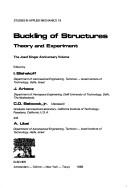
ISBN: 0444424474 1322461228 1483294471 9781483294476 9780444417589 9780444424471 Year: 1985 Publisher: Amsterdam, Netherlands ; New York, New York : Elsevier,
Abstract | Keywords | Export | Availability | Bookmark
 Loading...
Loading...Choose an application
- Reference Manager
- EndNote
- RefWorks (Direct export to RefWorks)
The boundary integral equation (BIE) method has been used more and more in the last 20 years for solving various engineering problems. It has important advantages over other techniques for numerical treatment of a wide class of boundary value problems and is now regarded as an indispensable tool for potential problems, electromagnetism problems, heat transfer, fluid flow, elastostatics, stress concentration and fracture problems, geomechanical problems, and steady-state and transient electrodynamics.In this book, the author gives a complete, thorough and detailed survey of the method. It pro
Boundary element methods. --- Dynamics. --- Eigenvalues. --- Elasticity. --- Plates (Engineering) --- Plates (Engineering). --- Disks (Mechanics) --- Panels --- Structural plates --- Elastic plates and shells --- Structural analysis (Engineering) --- Shells (Engineering) --- Dynamical systems --- Kinetics --- Mathematics --- Mechanics, Analytic --- Force and energy --- Mechanics --- Physics --- Statics --- Elastic properties --- Young's modulus --- Mathematical physics --- Matter --- Rheology --- Strains and stresses --- Strength of materials --- Matrices --- BEM (Engineering analysis) --- BIE analysis --- BIE methods --- Boundary element analysis --- Boundary elements methods --- Boundary integral equation analysis --- Boundary integral equation methods --- Boundary integral methods --- Numerical analysis --- Properties

ISBN: 0201101556 9780201101553 Year: 1985 Publisher: Reading (Mass.) : Addison-Wesley,
Abstract | Keywords | Export | Availability | Bookmark
 Loading...
Loading...Choose an application
- Reference Manager
- EndNote
- RefWorks (Direct export to RefWorks)
Signal processing --- Algorithms --- Digital techniques --- -51-74 --- 519.6 --- 681.3*F21 --- 681.3*G13 --- 681.32 --- 681.325 --- Digitale signaalbewerking --- Digitale techniek --- Processing, Signal --- Information measurement --- Signal theory (Telecommunication) --- Algorism --- Algebra --- Arithmetic --- Mathematics--?-74 --- Computational mathematics. Numerical analysis. Computer programming --- Numerical algorithms and problems: computation of transforms; computations infinite fields; computations on matrices; computations on polynomials; numer-theoretic computations--See also {681.3*G1}; {681.3*G4}; {681.3*I1} --- Numerical linear algebra: conditioning; determinants; Eigenvalues; error analysis; linear systems; matrix inversion; pseudoinverses; sparse and very largesystems --- Foundations --- Algorithms. --- Digital techniques. --- 681.3*G13 Numerical linear algebra: conditioning; determinants; Eigenvalues; error analysis; linear systems; matrix inversion; pseudoinverses; sparse and very largesystems --- 681.3*F21 Numerical algorithms and problems: computation of transforms; computations infinite fields; computations on matrices; computations on polynomials; numer-theoretic computations--See also {681.3*G1}; {681.3*G4}; {681.3*I1} --- 519.6 Computational mathematics. Numerical analysis. Computer programming --- 51-74 Mathematics--?-74 --- 51-74 --- Digital signal processing --- Digital communications --- Digital electronics --- Transforms --- CORRELATIONS --- Convolutions --- Monograph --- Signal processing - Digital techniques
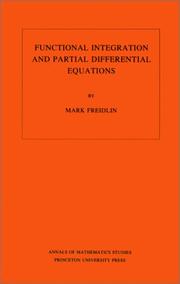
ISBN: 0691083541 1400881595 Year: 1985 Publisher: Princeton, N.J.
Abstract | Keywords | Export | Availability | Bookmark
 Loading...
Loading...Choose an application
- Reference Manager
- EndNote
- RefWorks (Direct export to RefWorks)
This book discusses some aspects of the theory of partial differential equations from the viewpoint of probability theory. It is intended not only for specialists in partial differential equations or probability theory but also for specialists in asymptotic methods and in functional analysis. It is also of interest to physicists who use functional integrals in their research. The work contains results that have not previously appeared in book form, including research contributions of the author.
Partial differential equations --- Differential equations, Partial. --- Probabilities. --- Integration, Functional. --- Functional integration --- Functional analysis --- Integrals, Generalized --- Probability --- Statistical inference --- Combinations --- Mathematics --- Chance --- Least squares --- Mathematical statistics --- Risk --- A priori estimate. --- Absolute continuity. --- Almost surely. --- Analytic continuation. --- Axiom. --- Big O notation. --- Boundary (topology). --- Boundary value problem. --- Bounded function. --- Calculation. --- Cauchy problem. --- Central limit theorem. --- Characteristic function (probability theory). --- Chebyshev's inequality. --- Coefficient. --- Comparison theorem. --- Continuous function (set theory). --- Continuous function. --- Convergence of random variables. --- Cylinder set. --- Degeneracy (mathematics). --- Derivative. --- Differential equation. --- Differential operator. --- Diffusion equation. --- Diffusion process. --- Dimension (vector space). --- Direct method in the calculus of variations. --- Dirichlet boundary condition. --- Dirichlet problem. --- Eigenfunction. --- Eigenvalues and eigenvectors. --- Elliptic operator. --- Elliptic partial differential equation. --- Equation. --- Existence theorem. --- Exponential function. --- Feynman–Kac formula. --- Fokker–Planck equation. --- Function space. --- Functional analysis. --- Fundamental solution. --- Gaussian measure. --- Girsanov theorem. --- Hessian matrix. --- Hölder condition. --- Independence (probability theory). --- Integral curve. --- Integral equation. --- Invariant measure. --- Iterated logarithm. --- Itô's lemma. --- Joint probability distribution. --- Laplace operator. --- Laplace's equation. --- Lebesgue measure. --- Limit (mathematics). --- Limit cycle. --- Limit point. --- Linear differential equation. --- Linear map. --- Lipschitz continuity. --- Markov chain. --- Markov process. --- Markov property. --- Maximum principle. --- Mean value theorem. --- Measure (mathematics). --- Modulus of continuity. --- Moment (mathematics). --- Monotonic function. --- Navier–Stokes equations. --- Nonlinear system. --- Ordinary differential equation. --- Parameter. --- Partial differential equation. --- Periodic function. --- Poisson kernel. --- Probabilistic method. --- Probability space. --- Probability theory. --- Probability. --- Random function. --- Regularization (mathematics). --- Schrödinger equation. --- Self-adjoint operator. --- Sign (mathematics). --- Simultaneous equations. --- Smoothness. --- State-space representation. --- Stochastic calculus. --- Stochastic differential equation. --- Stochastic. --- Support (mathematics). --- Theorem. --- Theory. --- Uniqueness theorem. --- Variable (mathematics). --- Weak convergence (Hilbert space). --- Wiener process.
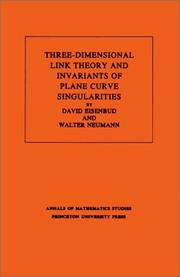
ISBN: 0691083819 0691083800 1400881927 9780691083810 9780691083803 Year: 1985 Volume: 110 Publisher: Princeton (N.J.): Princeton university press,
Abstract | Keywords | Export | Availability | Bookmark
 Loading...
Loading...Choose an application
- Reference Manager
- EndNote
- RefWorks (Direct export to RefWorks)
This book gives a new foundation for the theory of links in 3-space modeled on the modern developmentby Jaco, Shalen, Johannson, Thurston et al. of the theory of 3-manifolds. The basic construction is a method of obtaining any link by "splicing" links of the simplest kinds, namely those whose exteriors are Seifert fibered or hyperbolic. This approach to link theory is particularly attractive since most invariants of links are additive under splicing.Specially distinguished from this viewpoint is the class of links, none of whose splice components is hyperbolic. It includes all links constructed by cabling and connected sums, in particular all links of singularities of complex plane curves. One of the main contributions of this monograph is the calculation of invariants of these classes of links, such as the Alexander polynomials, monodromy, and Seifert forms.
Algebraic geometry --- Differential geometry. Global analysis --- Link theory. --- Curves, Plane. --- SINGULARITIES (Mathematics) --- Curves, Plane --- Invariants --- Link theory --- Singularities (Mathematics) --- Geometry, Algebraic --- Low-dimensional topology --- Piecewise linear topology --- Higher plane curves --- Plane curves --- Invariants. --- 3-sphere. --- Alexander Grothendieck. --- Alexander polynomial. --- Algebraic curve. --- Algebraic equation. --- Algebraic geometry. --- Algebraic surface. --- Algorithm. --- Ambient space. --- Analytic function. --- Approximation. --- Big O notation. --- Call graph. --- Cartesian coordinate system. --- Characteristic polynomial. --- Closed-form expression. --- Cohomology. --- Computation. --- Conjecture. --- Connected sum. --- Contradiction. --- Coprime integers. --- Corollary. --- Curve. --- Cyclic group. --- Determinant. --- Diagram (category theory). --- Diffeomorphism. --- Dimension. --- Disjoint union. --- Eigenvalues and eigenvectors. --- Equation. --- Equivalence class. --- Euler number. --- Existential quantification. --- Exterior (topology). --- Fiber bundle. --- Fibration. --- Foliation. --- Fundamental group. --- Geometry. --- Graph (discrete mathematics). --- Ground field. --- Homeomorphism. --- Homology sphere. --- Identity matrix. --- Integer matrix. --- Intersection form (4-manifold). --- Isolated point. --- Isolated singularity. --- Jordan normal form. --- Knot theory. --- Mathematical induction. --- Monodromy matrix. --- Monodromy. --- N-sphere. --- Natural transformation. --- Newton polygon. --- Newton's method. --- Normal (geometry). --- Notation. --- Pairwise. --- Parametrization. --- Plane curve. --- Polynomial. --- Power series. --- Projective plane. --- Puiseux series. --- Quantity. --- Rational function. --- Resolution of singularities. --- Riemann sphere. --- Riemann surface. --- Root of unity. --- Scientific notation. --- Seifert surface. --- Set (mathematics). --- Sign (mathematics). --- Solid torus. --- Special case. --- Stereographic projection. --- Submanifold. --- Summation. --- Theorem. --- Three-dimensional space (mathematics). --- Topology. --- Torus knot. --- Torus. --- Tubular neighborhood. --- Unit circle. --- Unit vector. --- Unknot. --- Variable (mathematics).
| Listing 1 - 9 of 9 |
Sort by
|

 Search
Search Feedback
Feedback About UniCat
About UniCat  Help
Help News
News